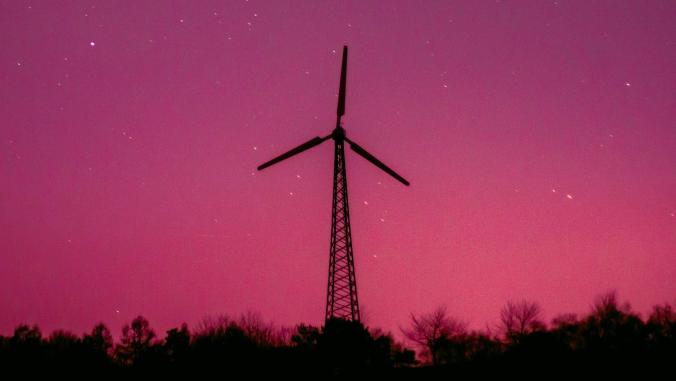Electric city: Volvo unveils vision for clean cars, buses and more
Swedish vehicle manufacturer focuses on air quality as it unveils a host of new green bus, truck and construction machinery prototypes.

For electric and low carbon vehicle advocates, the growing outcry over air pollution and its associated health impacts soon could create significant new markets.
And while most manufacturers say their plans long have been in development, there is now a palpable sense of acceleration towards the goal of delivering electric mobility at scale in the world's cities.
Precipitated by the diesel emissions scandal which engulfed it in 2015, Volkswagen recently has unveiled a raft of electric and automated models, while U.S. carmaker Ford is investing $4.5 billion in developing 13 EV models by 2020. Tesla continues to dominate the headlines and pretty much every major automaker is investing in either plug-in or fuel cell electric vehicle development.
Swedish carmaker Volvo is another major name joining the EV foray, having this week suggested itsoon will stop making diesel cars and announced plans last month to launch its first fully electric passenger car in China in 2019, a model that will add to a low emission range currently based around its Drive-E plug-in hybrid range.
But the air pollution crisis won't be solved by low emission passenger cars alone, as Volvo well knows. Consequently, at an event at London's Olympic Park earlier this week, the firm lifted the lid on a host of projects to deliver greener buses, trucks and construction machinery — all of which make up a significant proportion of city fleets, yet largely still run on fossil fuels.
Fully electric buses
Unlike some of the other green mobility projects Volvo is working on at the moment, the company's fully electric, single decker bus is already successfully on the roads and ferrying passengers around in Sweden. In England, Harrogate Borough Council soon will become the first U.K. local authority to adopt a full electric bus fleet when six of Volvo's 7900E Electromobility buses go into service next year.
Incredibly, these buses can be fully charged in less than six minutes using specialist, fully automated overhead masts — also set for installation as part of Harrogate's part-government-funded $2.93 million initiative — which allows them to travel for up to 20 miles. Each has four batteries on its roof comprising 78KWh in total.Incredibly, these buses can be fully charged in less than six minutes using specialist, fully automated overhead masts.
Although their single-decker size and infrastructural requirements makes the buses less suitable for London, Volvo expects to take more orders for the model — as well as its electric hybrid buses — from councils and local bus firms across the U.K. in the coming years as further restrictions are placed on air pollution.
As such, Volvo Buses senior vice president Ulf Magnusson is clearly aware of the business opportunities inherent in establishing more low emission zones or similar measures to improve air quality in U.K. town centers — as the government's oft-delayed air quality plan has promised.
"We see a very clear for tendency across all cities in Europe today on health and safety issues, and clean air is on everyone's agenda," he told BusinessGreen. "And electrified buses are an easy sell for the population, because we are investing more money in the newest technology that will actually benefit their health."
Volvo took the decision around eight years ago to stop producing 100 percent diesel city buses altogether, and it since has sold around 3,500 hybrid electric buses worldwide, with the U.K. one of its biggest markets.
Given regulatory uncertainty and tight council budgets, Magnusson said it is "impossible to tell" how many low emission buses will be running across town centers in five years' time. But, he added: "We and our competitors have products ready, it is really just a matter of waiting for ambition from each city to really invest in new technology."
Self-driving low emission refuse truck
The event also marked one of the first times Volvo has demonstrated its heavy-duty, self-driving waste and recycling truck, which runs on a biodiesel free from both fossil fuels and palm oil.
Strictly speaking, the truck doesn't drive by itself on a main road, but it can reverse itself several metrs at a time via a per-programmed route, with sensors continuously monitoring to ensure it doesn't crash into anything. The truck therefore can drive itself backwards from one wheelie bin to the next, while the refuse worker who otherwise drives the vehicle empties all the bins along the street.
The prototype project, part funded by the Swedish government alongside recycling company Renovo, isn't likely to hit the roads anytime soon, according to Lars Stenqvist, Volvo's chief technology officer and executive vice president for trucks technology. But with gear changing and speed constantly optimized by the vehicle to ensure low fuel consumption and emissions, the truck is clearly viewed as a potential refuse solution for traffic congested and increasingly populous cities of the future.
"When it comes to automation, we believe that it will start in confined areas, such as in a mine, quarry or perhaps a harbor, where you can control speed and safety," Stenqvist told BusinessGreen. "But if you go to the other extreme — a really dense city traffic situation — then it will be very long into the future before you have fully automated tractor solutions."
Green excavation
The drive for low-emission mobility to tackle poor air quality in urban centers is often centered on road vehicles, but diesel emissions from construction machinery is also a significant problem, being responsible for 12 percent of NOx and 15 percent of particulate pollution in Greater London. As such, non-road mobile machinery is now the subject of emission controls in London which are set to become stricter once the ULEZ comes into force in the coming years.
Against that regulatory backdrop, Volvo unveiled for the first time another prototype at this week's event: a zero emission, fully electric compact excavator, or in layman's terms, a small digger.The drive for low-emission mobility to tackle poor air quality in urban centers is often centered on road vehicles, but diesel emissions from construction machinery is also a significant problem.
Known as the EX2, the excavator is powered by two lithium ion batteries totaling 38KWh, which allows the machine to operate for eight hours at a time. Volvo claims the machine produces 10 times the efficiency and 10 times lower noise levels than conventional internal combustion engine models, as well as reduced ownership costs in comparison to traditional diesel-powered equivalents.
Yet the machine is purely a research project, and there are no current plans to manufacture the EX2. According to Stenqvist, it is another demonstration of the low emissions research work being undertaken by Volvo, and clearly shows the company — like many of its rivals — sees electric and automated solutions as the future for urban transport.
Precise details of how these electric transport solutions might work in practice, however, are still being considered by carmakers. And, prior to unveiling Volvo's current green city mobility developments, Stenqvist sought to inspire an audience of city council officers, green buildings experts, and freight companies towards further collaboration in pursuit of greener urban transport systems.
He urged them all to "dare to try" and deliver new technology and be "unafraid" of failing, while setting out a compelling vision for cities of the future driven by clean, electric, digitally connected and automated transport systems designed to work in unison with the built environment.
So does Volvo hope to be a fossil-fuel-free, 100 per cent electric vehicle company within the next decade? Not quite yet. Stenqvist believes the combustion engine will still be crucial for long haulage freight for the foreseeable future, explaining that it still has the potential to use alternative, renewable or biofuels. Fuels in liquid form can carry energy more efficiently batteries at the moment, he argued.
"But besides that, step by step, we are going to release many more full electric solutions, and also of course hybrid solutions in between," Stenqvist said. "I really believe that if you look at city centers in 2025, then you will see a lot of electrification."
Key to this vision, of course, will be effective city center air quality regulation, as well as a good U.K. trade deal for the global car industry post-Brexit.
"First of all, it is very important that we get regulations harmonized not just in one country but also across countries," Stenqvist added. "From a more local perspective what we are asking for from politicians who are brave enough is to start up more demonstration projects and invite industry and different stakeholders to set up transportation systems, because we can come with one piece of the puzzle — the vehicles — but it has to be integrated into one big system."
Volvo's demonstration projects and vision for electric city mobility indicate an increasing drive towards developing greener transport options among automakers. It remains to be seen, however, whether their R&D will be boosted by the wider rollout of local and national air quality regulations that the courts and public demands.
This story first appeared on:





